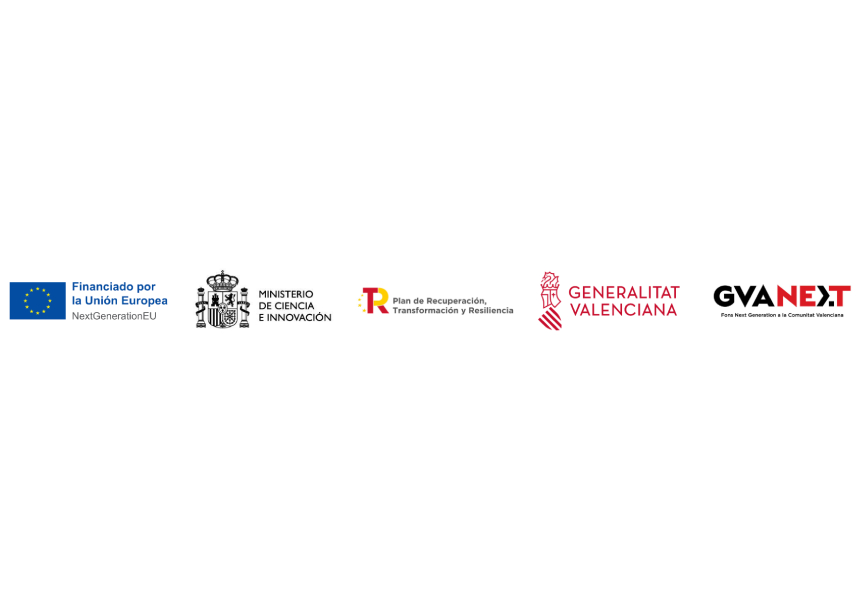- Created by the Desertification Research Center (CSIC-UV-GVA), this device is cheaper than other similar devices and is reusable, unlike balloon probes.
- By soaring up to 7 kilometers high, the data extracted by the drone could improve predictions of extreme phenomena such as the dana that affected Valencia or the evolution of fires.
The Climatoc-Lab group of the Desertification Research Center (CIDE), a center of the Spanish National Research Council (CSIC), the Universitat de València (UV) and the Generalitat Valenciana, has developed Meteo-Dron, a low-cost drone capable of ascending up to 7 kilometers high and providing valuable information about the atmosphere. These data, which can be visualized in real time, are a unique source of information to improve the models that predict extreme weather phenomena such as the dana that affected the province of Valencia. With a cost approximately ten times lower than other commercial devices, the CIDE's Meteo-Dron has the advantage of reusing its scientific equipment and being able to fly several times a day over the vertical and horizontal of a specific area, overcoming the limitations of the balloon probes currently used for weather forecasting.
Meteo-Dron has been developed within the framework of the ThinkInAzul program, the complementary R+D+i plan in Marine Sciences of the Ministry of Science, Innovation and Universities, in which the Valencian Community participates together with Andalusia, Cantabria, Galicia, the Region of Murcia, the Canary Islands and the Balearic Islands. The National Institute of Water and Atmospheric Research (NIWA) and the University of Auckland, both in New Zealand, where the equipment has been tested in different wind and turbulence conditions, both in wind tunnel and in real atmosphere, are collaborating in its development.
The device uses a commercial drone capable of reaching the middle levels of the troposphere (between 5 and 7 kilometers), equipped with a weather station that records atmospheric variables such as temperature, humidity, pressure, and wind direction and speed. These data are stored in a memory built into the drone itself and sent in real time to the ground control station for further analysis.
Improve prediction of extremes such as the dana
“Having meteorological data in real time from a vertical section up to 7 kilometers of the atmosphere over a specific point and several times a day offers us very valuable information to improve predictions of local extreme phenomena such as coastal storms, blowouts, severe storms or droughts like the one that affected the province of Valencia”, explains César Azorín, CSIC researcher at the CIDE, the PTI+ Clima and director of Climatoc-Lab. “It is unique information that we do not currently have”, he remarks.
At present, data from the atmosphere up to these altitudes are obtained by launching balloon probes that explode when they reach a critical altitude, with the loss of the scientific equipment they incorporate. Moreover, these devices are not controlled, and are launched only twice a day. With the Meteo-Dron developed by CIDE it is possible to fly several times over the same point, obtaining real time information on the evolution of the atmospheric conditions without losing the scientific equipment.
“Our device could replace balloon probes, a technology that has a high environmental impact as it is destroyed in the air, with a more sustainable technology that can be reused”, summarizes José Gómez, Climatoc-Lab technician involved in the development of the Meteo-Dron. In addition to being able to visualize the data in real time and save them in a database for later analysis, the drone's design incorporates a real-time correction algorithm to eliminate flight movement and thus achieve greater accuracy in wind data collection.
Monitoring fires
In addition to the surveillance and monitoring of atmospheric conditions to improve predictions of extreme events, Meteo-Dron has other applications. “It could also be used to monitor forest fires, by detecting changes in wind direction and intensity with which to fine-tune evolution models,” says César Azorín.
Climatoc-Lab is now finalizing the permits to fly the Meteo-Dron at the contemplated altitude ranges, and to start daily sampling campaigns of the atmospheric conditions in several areas of the Valencian Community. This will generate a database with unique information for the study of the local atmosphere and its possible variations.
ThinkInAzul is funded by the Recovery,Transformation and Resilience Plan - Funded by the European Union - NextGenerationEU
CIDE Communication










